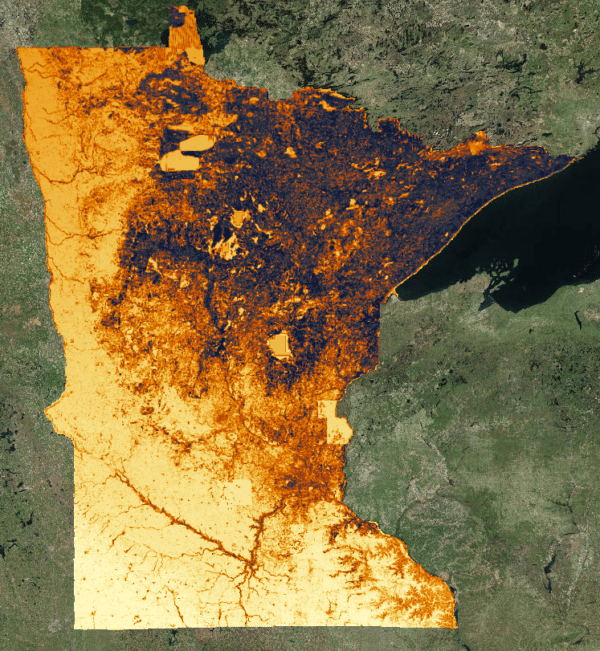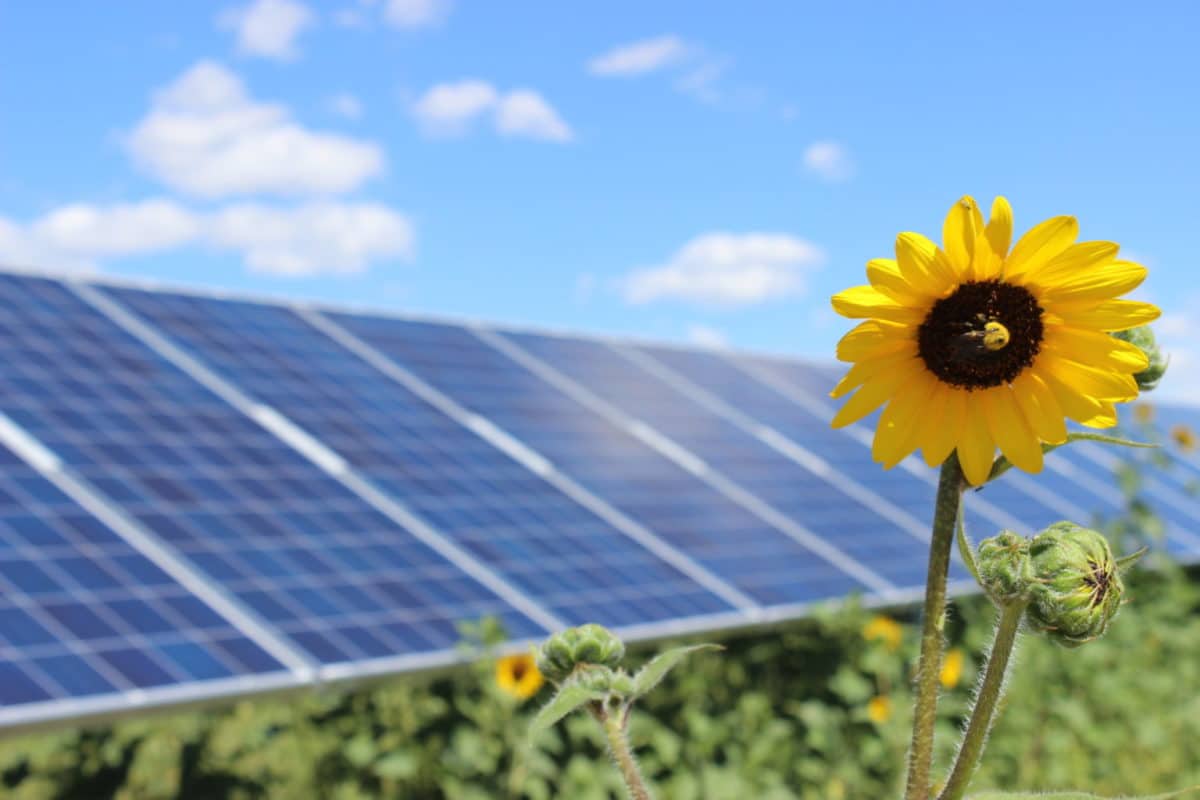Successfully building a solar facility on a given site is no small feat.
Even before confronting the complexities of off-take, equipment procurement, and financing, a solar developer needs to find a good site on buildable land that avoids adverse impacts to wetlands, critical species habitat, or archaeological or cultural resources. It needs to be able to interconnect to the transmission or distribution grid without budget-busting upgrades or queues fraught with lengthy delays (both of which are in increasingly short supply).
It needs the support of participating landowners, the local community, and the permitting regime. And, of course, it helps to have good solar insolation.

In addition, solar developers in the Midwest are also confronted by agricultural preservation goals.
Tension in the Heartland
We have in the past pondered if, how, and when midwestern states would reckon with the tension between renewable energy development and agricultural preservation rules and programs.
With the next wave of solar development on the near-term horizon based on the gigawatts of solar planned within the decade, it appears that Minnesota may be on the verge of encouraging the significant co-benefits of solar done well.
Legislation currently under consideration in the Minnesota legislature would, if passed into law, require the Minnesota Public Utilities Commission to enter into expedited rulemaking to amend a long-standing state siting rule. That rule prohibits permitting a large electric power generating plant where more than 0.5 acres of prime farmland would be used per megawatt of capacity, unless there is no feasible and prudent alternative (Minnesota Administrative Rules 7850.4400, subp. 4, the “Prime Farmland Rule”).

The Prime Farmland Rule stems from a growing concern in the late-1970s and early-1980s over the permanent impacts to cropland from siting conventional generation facilities and their associated rail spurs, coal piles, waste storage, buildings, and transmission substations. Solar development, which has a relatively broad but low-intensity landscape footprint, was far from sight at the time and wouldn’t materialize in the state for several decades.
Fast forward to 2013 when the Solar Energy Jobs Act was passed into law setting solar standards and goals for the state, and a few larger solar projects began working their way through the Commission’s permitting process only to run immediately into the Prime Farmland Rule.
A developer proposing a 62.25 MW project on a site near Marshall, Minnesota, included nearly 400 acres of prime farmland (of different classifications), many times the Prime Farmland Rule of no more than 0.5 acres per MW of generation. Ultimately, the Commission permitted the facility via an exception to the rule by determining there was no feasible and prudent alternative.
In part, any similarly sized project within 50 miles of the proposed interconnecting substation would require the same use of prime farmland. Recognizing the inevitability that the expansion of solar development will continue to be in conflict with the Prime Farmland Rule, the Minnesota Department of Commerce issued guidance for developers in 2020 on how to make their case for a similar exception to the Prime Farmland Rule.
Highest and best use
The reason solar needs to coexist with farmland in Minnesota is multifaceted and gets at the heart of how to put the state’s diverse land resources to their highest and best use.

Image: Minnesota state lidar collection
Minnesota is bisected by a swath of tallgrass aspen or deciduous forest running from the northwest to the southeast, with coniferous forest to the northeast, and prairie grasslands to the south and west. The state’s best renewable resources and prime farmland resources largely follow similar outlines with little overlap with the coniferous forest in the northeast and significant overlap with the prairie and deciduous savannas of the south and west.
This region is also home to the vast majority of Xcel Energy’s service territory and the highest population density regions in the state, including the Twin Cities at the eastern most edge of the deciduous savanna. As a result, the bottom half of the state is designed to force a conversation about whether solar and farmland preservation can co-habitate in the south and west to serve the load to the east.
This also happens to be the region of the state that has been serving as the state’s growing laboratory for “agrivoltaics,” with approximately 800 MW worth of community solar generating capacity installed to date.
While solar developers and local communities have been experimenting with pollinator-friendly plantings at such solar sites for several years now (and notably since the voluntary pollinator pledge was signed into state law in 2016), as of this past April more than 50 solar sites were listed as meeting the standards of Minnesota’s Habitat Friendly Solar Program administered by the Minnesota Board of Water and Soil Resources.
The National Renewable Energy Laboratory has begun studying the array of co-benefits of pollinator-friendly plantings with solar projects in a handful of leading states like Minnesota. The research tracks the increases in pollinator populations, production benefits to surrounding farms due to such pollinator increases, the energy production boost due to the added efficiency from the cooling effect of the shade and evaporation from native vegetation, and benefits to water and soils. And, increasingly, solar developments in the state that have been thoughtfully planted are also paired with sheep grazing and/or honey production.
Policy update?
Legislation included in the Minnesota legislature in HF 1031, the omnibus commerce bill, recognizes the need for an update in recognizing the different impacts modern energy development practices can have on our natural and farmland resources. It aims to turn the conflict created by old rules that presume energy generation and farmland preservation cannot coexist on its head in favor of encouraging the co-benefits available to solar development, which, if done right, can facilitate long-term soil, water, agricultural, and ecosystem health.
The bill would require the Public Utilities Commission to amend the Prime Farmland Rule to allow the siting of a solar project on prime farmland as long as the project helps preserve sensitive groundwater; establishes perennial vegetation and foraging habitat beneficial to game birds, songbirds, and pollinators; or is co-located with and does not disrupt an agricultural use such as grazing or harvesting forage. If promulgated, such a rule would remove a significant hurdle to the development of utility scale solar projects in Minnesota and allow the state to turn a problem for renewable energy development into an opportunity.
Sara Bergan is of counsel at Stoel Rives where she helps renewable energy clients navigate the various stages of project development, construction, and acquisition/divestiture. Thomas Braun is an environmental and energy attorney at Stoel Rives whose practice includes advising clients in the energy, real estate development, and agribusiness industries on matters related to contaminated site remediation and redevelopment, land use and permitting, and environmental due diligence.
The views and opinions expressed in this article are the author’s own, and do not necessarily reflect those held by pv magazine.
This content is protected by copyright and may not be reused. If you want to cooperate with us and would like to reuse some of our content, please contact: editors@pv-magazine.com.








By submitting this form you agree to pv magazine using your data for the purposes of publishing your comment.
Your personal data will only be disclosed or otherwise transmitted to third parties for the purposes of spam filtering or if this is necessary for technical maintenance of the website. Any other transfer to third parties will not take place unless this is justified on the basis of applicable data protection regulations or if pv magazine is legally obliged to do so.
You may revoke this consent at any time with effect for the future, in which case your personal data will be deleted immediately. Otherwise, your data will be deleted if pv magazine has processed your request or the purpose of data storage is fulfilled.
Further information on data privacy can be found in our Data Protection Policy.